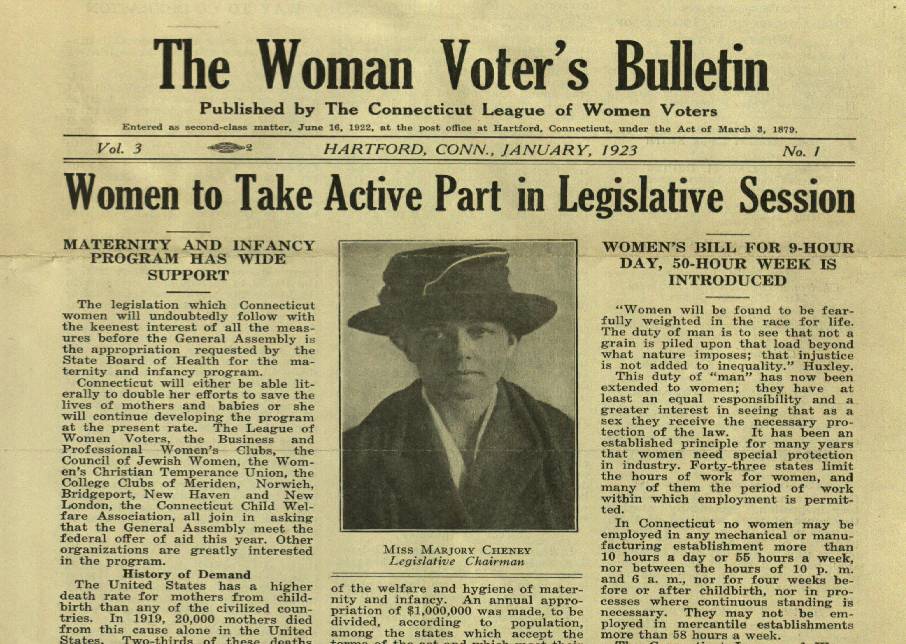Today, March 8, is International Women’s Day. First observed in Austria, Denmark, Germany, and Switzerland as International Working Women’s Day, this annual event was established in 1910 by the Second International Conference of Socialist Women when it met in Copenhagen, Denmark. The conferees agreed that the “foremost purpose” was “to aid the attainment of women’s suffrage.” The earliest observances took place on March 15, 1911, but the date fluctuated over the decades. In 1975, during the International Women’s Year, the United Nations set the annual observance of this day as March 8. Given the day’s early ties to the suffrage movement, it’s an apt time to recall those in Connecticut who fought for women’s right to vote at the state and national levels.
Remembering the Connecticut Woman Suffrage Association
Women’s fight for the right to vote in the Constitution State may be dated to 1869, when the Connecticut Woman Suffrage Association (CWSA) was organized. Led by Isabella Beecher Hooker of West Hartford, the CWSA had, by the first decade of the 20th century, made gains for women in local elections, such as voting for school board members and library issues. Thwarted by a conservative state government, women remained voiceless on statewide issues. Yet in 1910 the CWSA was reinvigorated by a new generation of leaders, all college educated and career minded. Katharine Ludington of Hartford along with Caroline Ruutz-Rees and Grace Thompson Seton, both of Greenwich, adopted new strategies to win the vote for Connecticut’s women. They joined forces with the Connecticut National Woman’s Party, the more militant organization founded by Alice Paul and, in 1920, led by Katharine Martha Houghton Hepburn of Hartford. Together they petitioned, picketed, and published to persuade the Connecticut General Assembly to ratify the 19th Amendment to the US Constitution.
In March of 1920, the push to have Connecticut ratify the Federal Amendment intensified. At that point, 35 states had voted in favor of the Amendment but 1 more was required to achieve the necessary three-quarters majority. (The US had 48 states at the time.) Advocates hoped that Connecticut would be that essential 36th state. The Connecticut General Assembly did approve the Amendment but on September 14, 1920, after the law had been nationally ratified with Tennessee’s affirmative vote on August 18, 1920.
Still, the CWSA’s efforts were essential to and recognized by the national movement. In Elizabeth Cady Stanton’s History of Woman Suffrage (Volume V: 1900-1920), we learn that “Connecticut women made a magnificent campaign” for adoption of the Federal amendment when it first came before the State legislature, where it failed by only one vote in the Senate after passing in the Congress. “The strength displayed by the suffragists, the obtaining of 98,000 women’s signatures and the dignity and ability shown under the leadership of Miss Katherine [sic] Ludington, so advanced suffrage in that State as to make the battle seem a victory rather than a defeat.” Though woman suffrage efforts in Connecticut may have been defeated in their wish to be that deciding 36th state ratification, they won the day by not relenting until that successful September 14 vote.
Contributed by Shirley T. Wajda, PhD, an independent historian living in the Connecticut Western Reserve.








